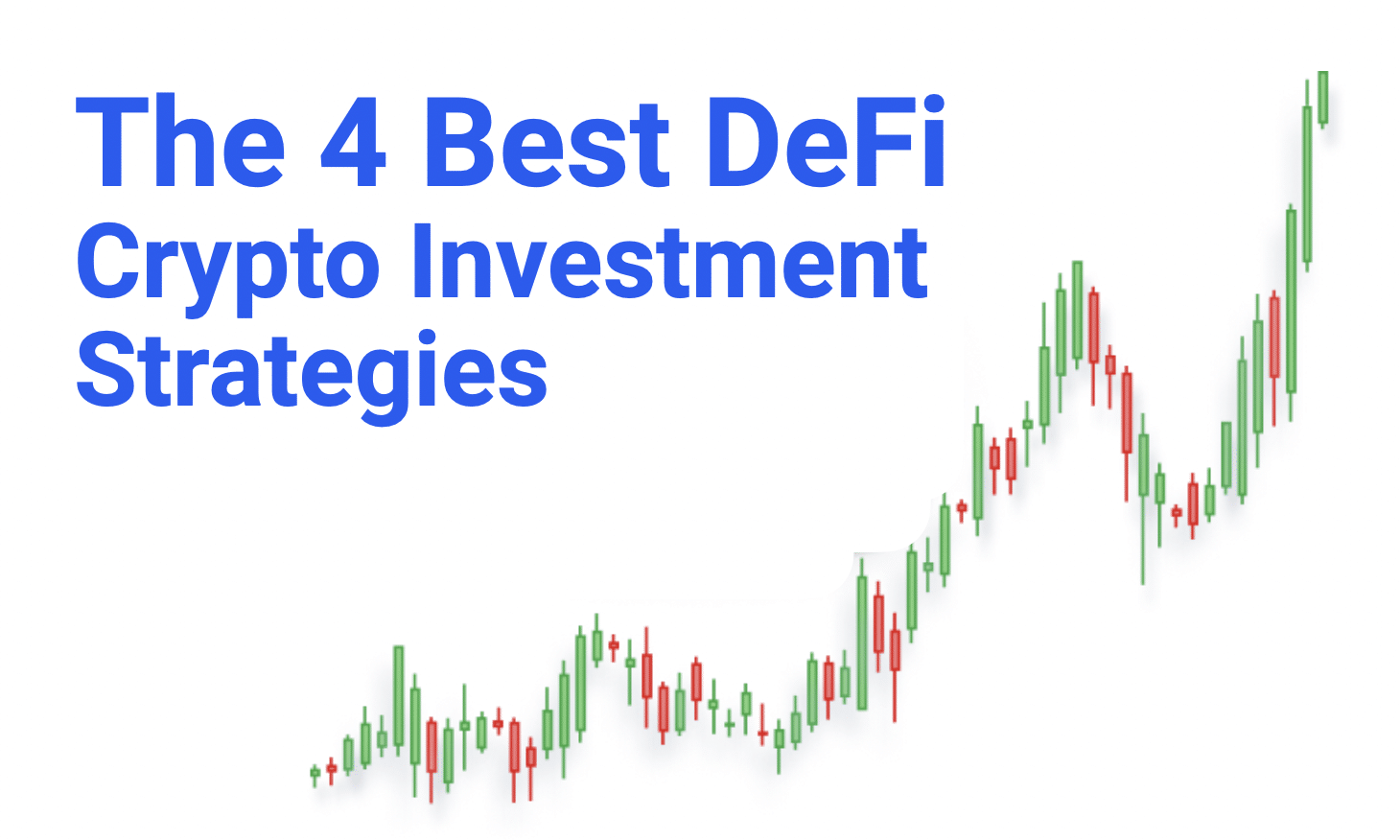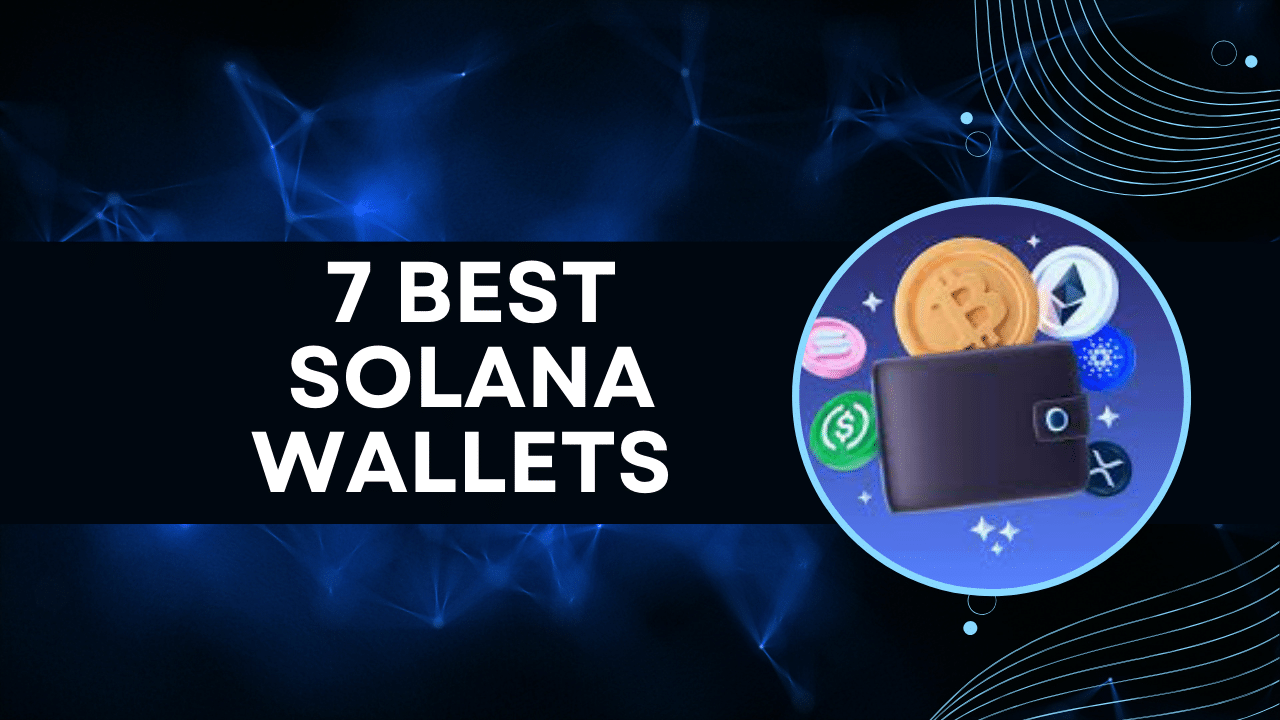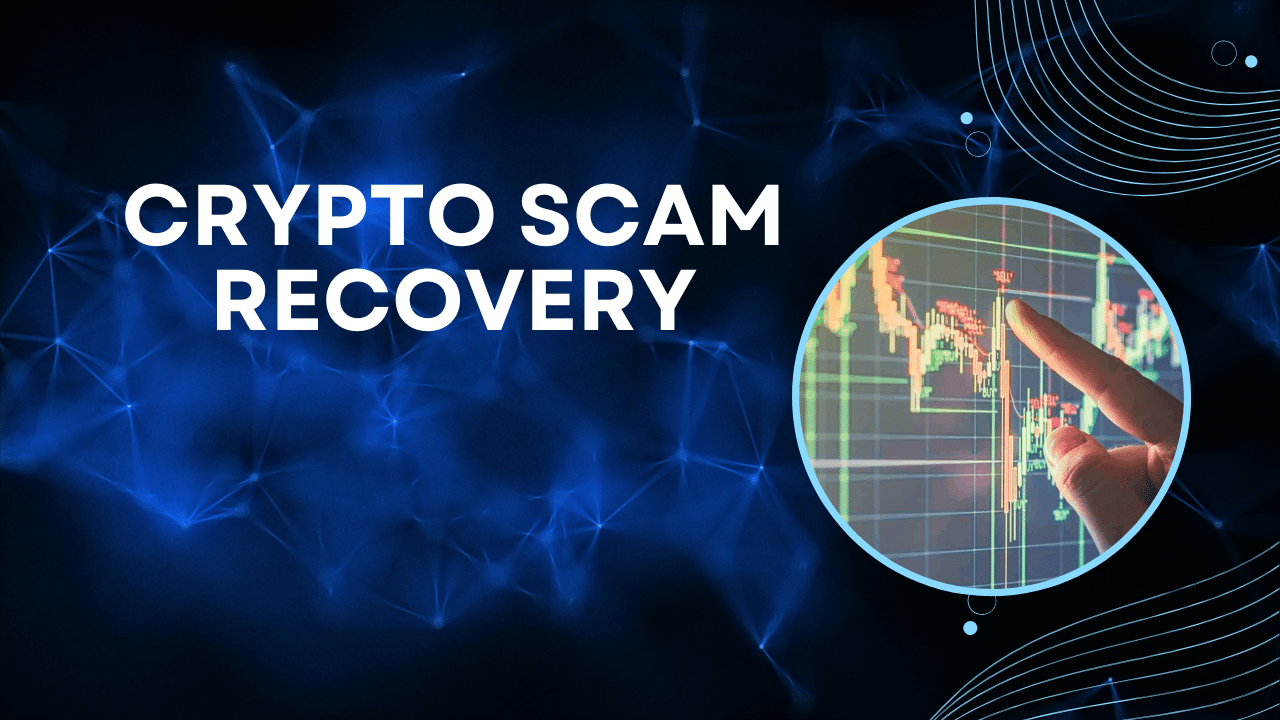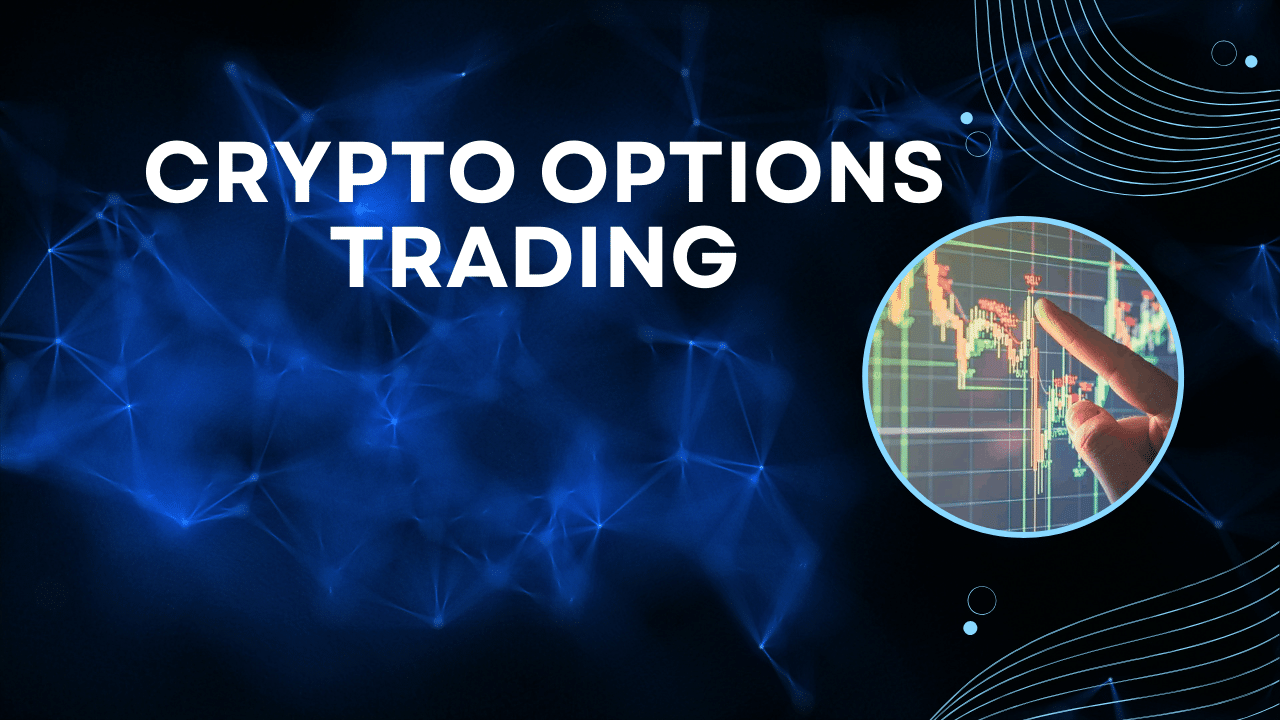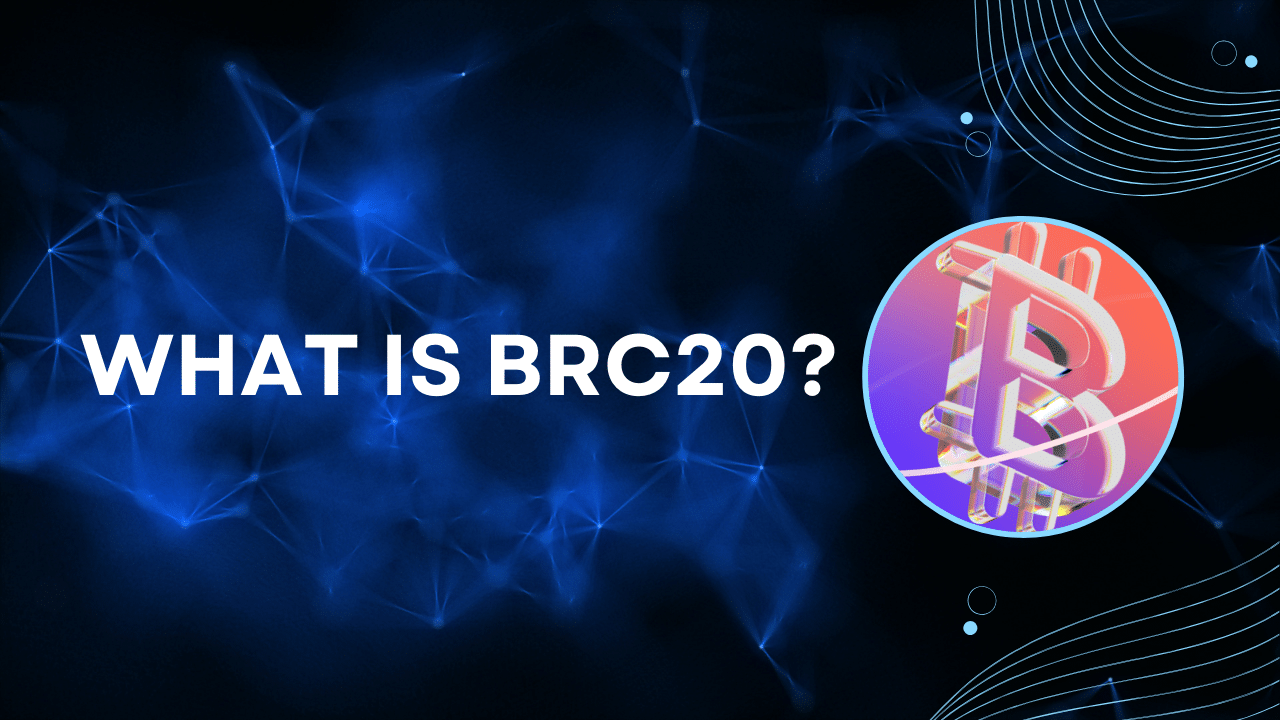Contents
|
|
Blockchain technology is transforming the world of traditional centralized finance investment.
A centralized financial system hinders the speed and sophistication of transactions and weakens individual investors ability to control, transact, and exchange their assets or money. In exchange, centralized organizations offer security and safety.
Decentralized financial systems, or DeFi distributes authority traditionally controlled by governments and central banks, through consensus protocols which give individual investors greater control of their money while increasing the speed and sophistication of transactions. DeFi makes trust and security programmatic and automatic, and provides complete transparency to all parties involved.
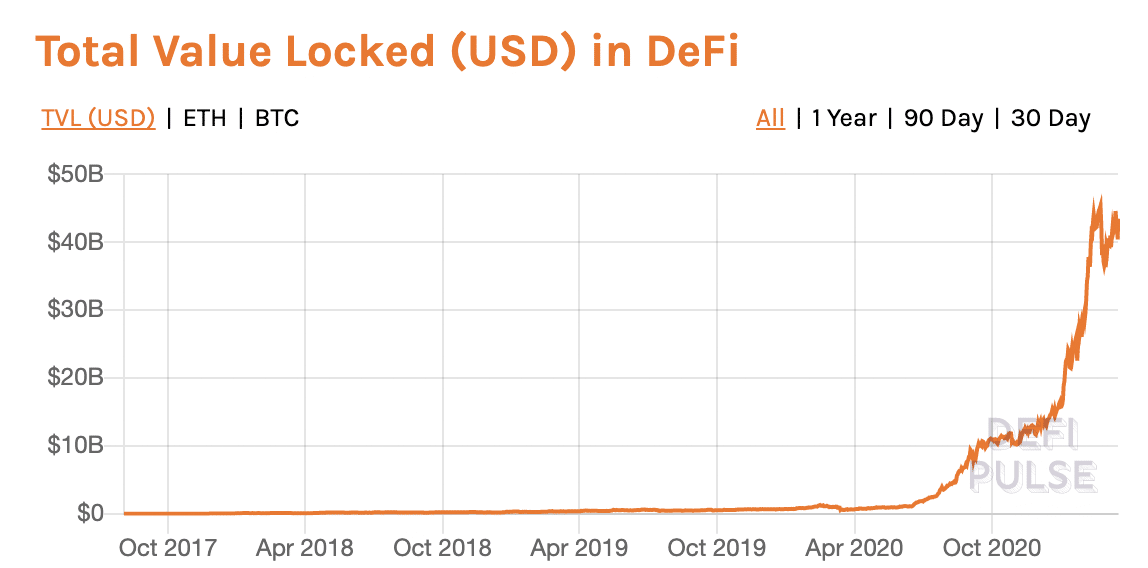
Image: DeFi Pulse
In little to no time, DeFi has become a multi-billion dollar market. Since the beginning of 2020, the overall value locked up in DeFi contracts has gone up from $650 million to $43.50 billion. So, do you want to enter this market? Are you looking for the best defi crypto investment strategies for you? Then read on!
Contents
What are the best DeFi crypto investment strategies?
The ‘best’ is different for each person, so you will have to decide which of the following 4 strategies is right for you based on your risk tolerance, and investment goals. That said, these 4 strategies are a great place to start.
HODL (Hold On for Dear Life!)
HODL or hodl originated in 2013 on a post on a Bitcoin forum that was discussing a surge in the price of Bitcoin and a subsequent fall in the price. A user “GameKyuubi,” posted “I AM HODLING,” underlining his determination to hold his bitcoin. Within a few hours, HODL made its way into memes and was all over the internet.
So that was the origin of the word “HODL”, but how does it work as an investment strategy? HODL disapproves of all trading based on short-term price movement. Instead, Hodlers hold on to their coins despite a fall in the market. When the price of an asset or coin drops, most investors will see the asset as a negative asset. However, investors who use the HODL strategy continue to hold their assets and coins and not sell them.
There are several strategies that investors can turn to, and HODLing is one of them. HODLing does not require the obsessive attention that day-trading requires and is probably a good strategy for beginners. HODLers hold their cryptocurrency in the hopes that the price rises in the near future, instead of basing their investment strategy on short-term price movements.
Though HODLing may seem like a simple strategy, it takes a degree of mental fortitude and resilience to implement it. HODLers have to deal with a significant level of volatility, in which the price of the asset could drop or surge.
Investors who HODL also have to deal with FOMO (Fear of Missing Out) and FUD (Fear, Uncertainty and Doubt). Sometimes these factors will force investors to sell at lower prices than they intended to, leading to fewer profits. However, HODLing through the fluctuations can lead to significant profits.
Buy and Sell Governance Tokens
Obviously, along with hodling, there is another strategy that one can use for investing in DeFi apps – buying/selling governance tokens. Overall, there are three token trading strategies:
- DeFi Degen.
- Rules-based
- Momentum-based.
DeFi Degen
Degen or “Degenerate” is a term used by crypto Twitter to address those who constantly switch from one DeFi token. These people don’t do their own research and are largely dictated by FOMO. In this form of trading, risk-management is close to 0. DeFi degens may even invest money into projects that barely had a website, let alone a reputable team or a whitepaper.
Rules-based
Opposite to DeFi degen, there is the rule-based approach. In this system, the trader uses predetermined rules that dictate the entry and exit approach. E.g. We can follow a rule wherein we buy as soon as the price crosses 50% of the listing price and sell if the asset is 30% down from the peak.
Momentum-based
This system is a hybrid of the DeFi degen strategy and the rules-based strategy. It is not as calculative as the rule-based approach but still adheres to selling when the price drops slightly.
Alright, “holding on to your tokens” and “buy-and-sell” different tokens are pretty standard practices. However, what makes DeFi so exciting is that it opens you up to a whole new financial product world. So, what are some of the things that you can do? Let’s take a look.
Interest On Lending Protocol
The third investment strategy that we will look into is leveraging one of the most well-known tools in DeFi-verse – lending protocols! So, how do these protocols work?
Before we get any deeper, let’s look into Automated Market Makers (AMMs). AMMs are an integral part of the DeFi ecosystem that allows digital assets to be traded in a permissionless and automatic way using liquidity pools rather than a traditional market of buyers and sellers.
At its very core, an AMM works like this:
- The liquidity provider (LP) puts funds into a liquidity pool
- The pool is used to power a marketplace where users can lend, borrow, or swap tokens.
- Upon using the pools, the user accrues fees, which are then paid out to the liquidity providers.
While this is the core concept, the implementation may vary from project to project. The overall fees accrued are paid off to the LPs for their services. This entire process wherein you can earn rewards by locking up your tokens to add liquidity is called “yield farming.” However, this is just one side of the equation.
Lending protocols also allow you to participate in liquidity mining. In Liquidity Mining, the protocol rewards you with a token every time you lock up your tokens in a liquidity pool. E.g. every time you lock up A tokens in a B liquidity pool, you get rewarded with token X.
The funds locked up in the pools are mostly stablecoins like DAI, USDT, USDC, BUSD, etc. Some protocols may mint tokens that represent the coins you have deposited into their system. For example, upon locking up DAI in Compound, you get cDAI.
Advantages Of Yield Farming
Let’s go through some of the main benefits of Yield farming:
- The main advantage of yield farming is the profit opportunity it gives to the users. Early movers can benefit from the token rewards of an up-and-coming project. One can make significant gains by choosing the correct project to farm on.
- Users can use a variety of different DeFi protocols to earn yield. Different protocols offer different risks and rewards. An educated user can cleverly move between these platforms to gain maximum rewards.
- Allows farmers to continually farm and reinvest their gains to earn rewards continually.
- Since a significant amount of tokens are locked up as stakes, it significantly reduces the overall token velocity.
Derivatives
Derivatives are the holy grail of the global finance market. It is a contract that specifies the exact conditions under which two parties can transact with each other. These conditions may be either a predetermined time period, or contractual obligations, among others
As per the Bank for International Settlements (BIS), in the first half of 2019, the total notional amounts outstanding for derivatives contracts is around $640 trillion*. However, the gross market value of all these contracts falls significantly to approximately $12 trillion. Historically, the derivatives market has played an indispensable role in growing global financial markets.
Enter DeFi Derivatives
DeFi derivatives is an exciting and emerging sector within the DeFi industry. Projects like DyDx and Synthetix have gained significant traction, with the former surpassing $2 billion in overall value locked in. Plus, there are also promising projects like Futureswap that are bringing in the futures market to crypto.
And then, we have the options market. The options market is one of the centralized financial world leaders because of the flexibility it provides over futures contracts. All in all, derivatives are a necessary addition since they:
- Allow you to hedge or mitigate risk.
- Lets you observe how your asset performs with respect to external events.
- Interact with the asset even if you don’t have direct access to the asset itself.
- Minimize your risks with arbitrage trading.
- Allow you to maximize profits with leverage trading.
- Both futures and options can reward you immensely for making accurate price predictions.
Examples of Derivative Platforms
OPYN
TVL: $9.3M
OPYN is an options platform built on “Convexity Protocol.” Convexity Protocol is a generalized options protocol built on the Ethereum blockchain and allows users to create options using oTokens. Users can leverage the Opyn.co interface to buy and sell put and call options on ETH with ease.
Synthetix
Token: SNX
TVL: $2.54B
Synthetix is a synthetic asset protocol that allows anyone to stake the SNX or ETH tokens as collateral and mint synthetic assets against it. This makes the Synthetix platform extremely flexible since any asset that has a reliable price feed qualifies as a synthetic. Synthetix has a native token called SNX. Holders can lock in collateral such as SNX and ETH to mint Synths, which are freely tradeable ERC20 tokens.
DyDx
TVL: $241.8M
DyDx is a non-custodial trading platform on Ethereum geared toward experienced traders. Powered by Solo, DyDx’s open source protocol, it allows users to lend, borrow, or margin trade. Borrowers’ interest rates vary by asset and adjust with supply and demand. Interest continuously accrues and is paid to lenders, minus 5% which is set aside for dYdX’s insurance fund.
Futureswap
Token: FST
TVL: $51.1M
Futureswap is a decentralized perpetual exchange governed by the community. It offers leverage, live pricing, high capital efficiency, and incentivized usage. It has a unique AMM, that enables users to deposit an asset/stable pairing into a liquidity pool to earn trade fees as well as FST.
Hegic
Token: HEGIC
TVL: $75.2M
DyDx is a non-custodial trading platform on Ethereum geared toward experienced traders. Powered by Solo, DyDx’s open source protocol, it allows users to lend, borrow, or margin trade. Users can hold liquidity inside the option contract itself and exercise Hegic options any time they want.
Conclusion
The DeFi markets are incredibly innovative. Currently, we are sitting on a multi-billion market that’s STILL in the early stages. DeFi could still grow to be a potentially trillion-dollar market. The problem with DeFi is that it is still a little hard to get into a newcomer. As such, the “HODLing” and “Buy And Sell Tokens” strategies may be the ones for you. However, if you are somewhat familiar with the ecosystem, leveraging the different tools you give to you by this rich ecosystem is the way to go.
